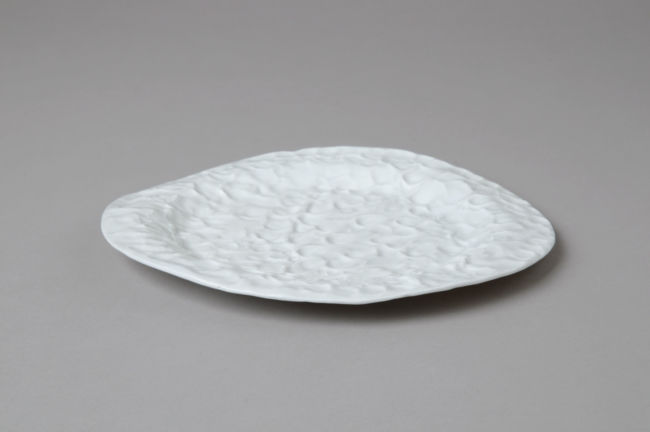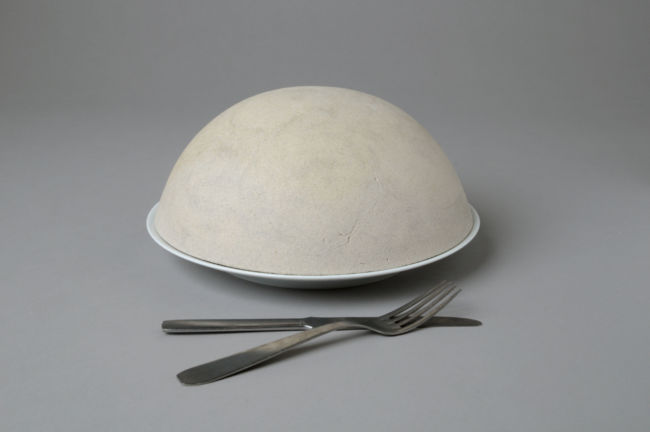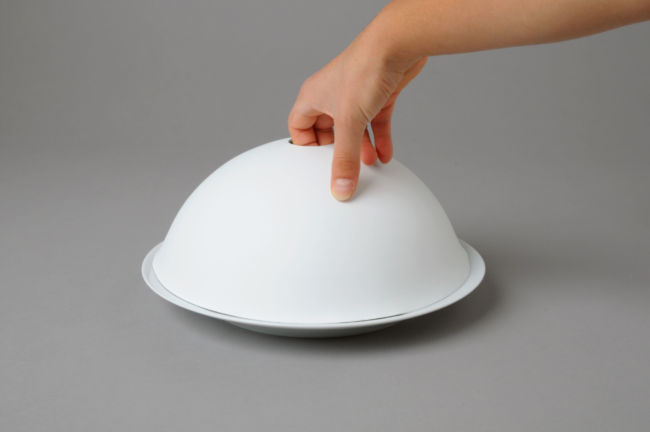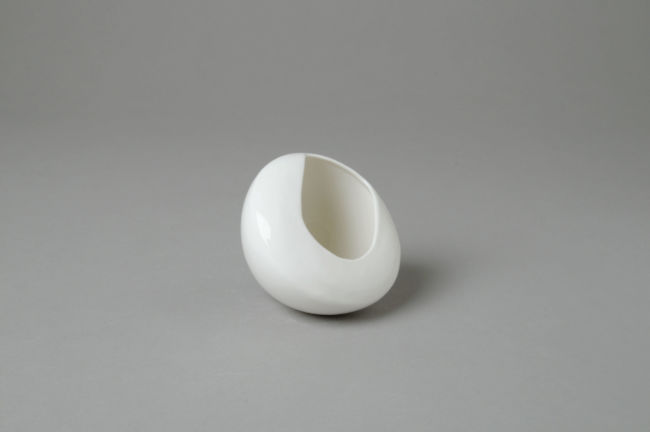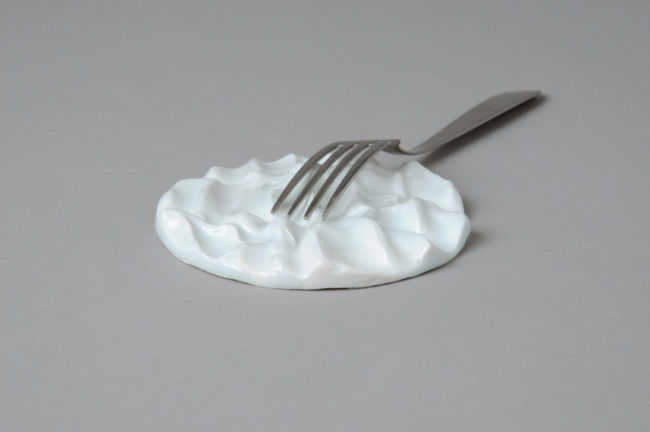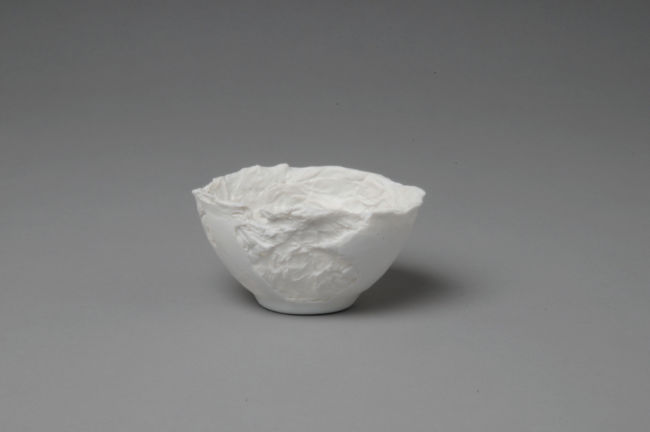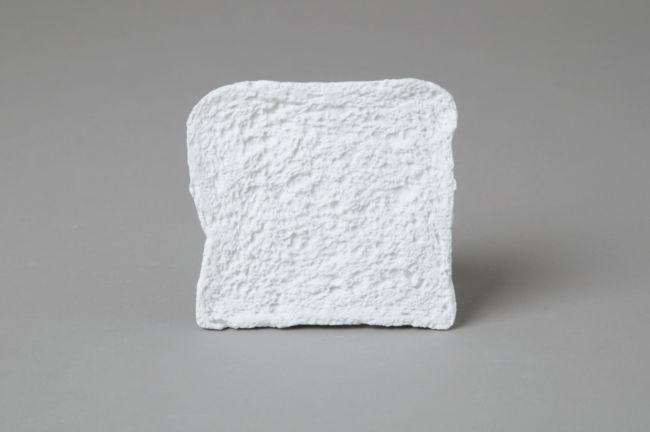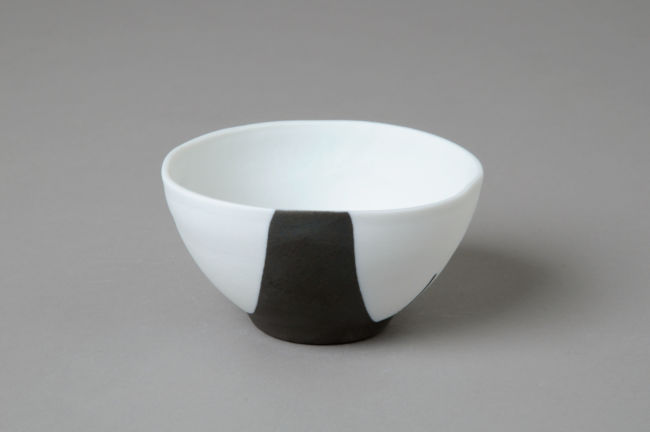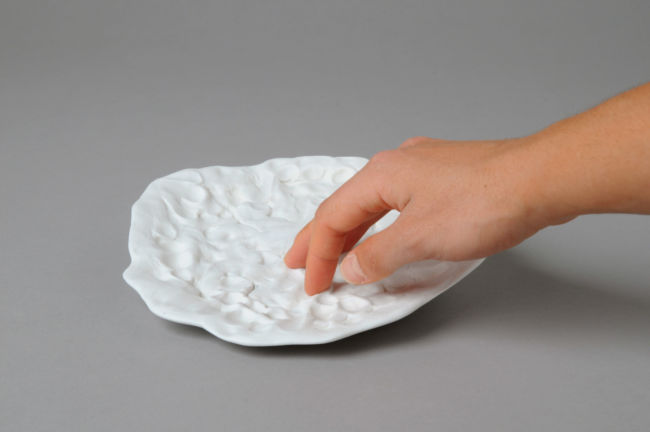All these projects draw on the way I’ve learnt and discovered skills in making Limoges porcelain. Some are personal, others come from workshops with a specific subject, but they represent my position as a designer experimenting with novel ceramic forms. Arabesques and curves in my pieces, for example, are used to constrain or guide body movements, modulating the activation of different senses. In other pieces, smooth surfaces are replaced with hollows or raised areas for fingers and hands that suggest positions for holding. I employ surface decoration sometimes to trick the eye or convey a story. Colour, the least predictable of decorative strategies, is used to unify a series of pieces, but I complete this by including a single unexpected item of different colour that adds a subtle uniqueness to the whole. Other experiments have been more to do with form, as in the pieces based on the dish or platter covers associated with gastronomy and haute cuisine. Here I have over-exaggerated their size to make them clumsy, thus turning attention away from the food they are supposed to reveal.
